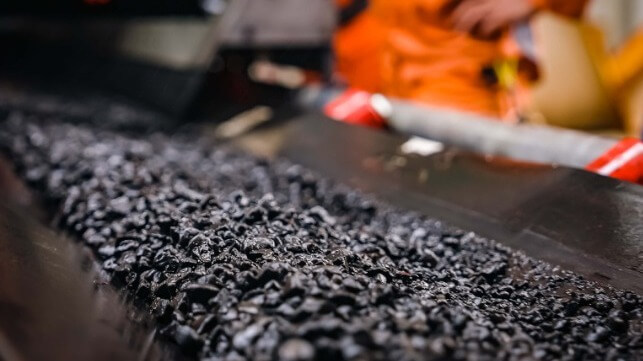Mineral-Rich Nodules Produce "Dark" Oxygen in the Abyss

Researchers funded by a polymetallic nodule mining company appear to have discovered an entirely new source of oxygen production in the abyssal plain of the Clarion-Clipperton Zone: the nodules themselves, which appear to have electrolytic properties. If confirmed, it would upend the time-honored consensus that photosynthesis created all of the free oxygen in earth's natural environment - raising questions about the origins of life itself, and opening broad new avenues for research. On a practical level, the discovery could reinforce concerns about the ecosystem effects of removing the valuable nodules from the seabed.
Over the course of multiple voyages to study the Pacific's Clarion-Clipperton Zone, Prof. Andrew Sweetman of the Scottish Association for Marine Science (SAMS) kept getting data that didn't make sense. When his team partitioned off a small area of the bottom to test how much oxygen the microorganisms in the sediment consumed from the water, the oxygen sensor readings would go up over time - not down, like every other place in the world's oceans. This was confusing, because there is no light that far down in the ocean, and light is required for photosynthetic organisms - the only known producers of oxygen in the natural world.
"When we first got this data, we thought the sensors were faulty, because every study ever done in the deep sea has only seen oxygen being consumed rather than produced. We would come home and recalibrate the sensors but over the course of 10 years, these strange oxygen readings kept showing up," Prof. Sweetman said.
On a return voyage, Sweetman's team used a different method to measure oxygen readings near the seabed and got the same results: more unexplained ("dark") oxygen as hours passed, and lots of it. At that point, he know that he was onto something big. He ran the same tests with the same seabed cores and same nodules in poisoned seawater, to rule out any biotic source of oxygen, and found that the levels still went up.
Working with a chemist at Northwestern University, Sweetman checked whether the nodules might have enough electrical potential to split water into hydrogen and oxygen. The nodules showed voltage potential differences of up to about one volt, with wide variations between different locations on the surface. The lumps are made up of countless layers of manganese, nickel, cobalt, and other metals, deposited over hundreds of millions of years, much like a naturally-formed battery. In the presence of a catalyst (like the manganese on the rocks' surface), and with multiple nodules clustered together, this might be enough voltage to split water into hydrogen and oxygen.
Critics of deep sea mining have long warned that the abyssal ecosystem is little understood, and that more research is needed to ensure that resource extraction doesn't cause permanent damage. Sweetman says that while the findings aren't a "nail in the coffin" for deep-sea mining, it would be appropriate to revisit previous studies of which seabed areas need to be protected, in light of the new and vital information.
"Through this discovery, we have generated many unanswered questions and I think we have a lot to think about in terms of how we mine these nodules, which are effectively batteries in a rock," he said.
If his study is right, and if the nodules are removed or smothered in sediment from mining, it could cut off the oxygen supply for the local ecosystem. This puzzle piece might help explain why some previously mined spots on the seabed are barren, even after decades.
"A few years ago, a team of marine biologists went back to those areas that were mined 40 years ago and found essentially no life," Prof. Franz Geiger, the chemist who contributed to the study, told NPR. "And then a few hundred meters over to the left and right, where the nodules were intact, plenty of life."
The study also raises new and fundamental questions for biologists. Until now, the scientific community's consensus understanding was that Earth's oxygen supply came exclusively from photosynthesis, starting with blue-green algae (cyanobacteria) about three billion years ago. A new, significant oxygen source at the bottom of the ocean might give rise to new theories about the origins of life.
"We thought that life began on Earth when photosynthesis kicked in, as oxygen was brought to Earth through photosynthesis. It could be that actually, this process of electrochemically dividing water into oxygen and hydrogen supplied oxygen to the ocean," co-author Tobias Hahn told The Washington Post. "This could be a kind of game changer in the story about how life started."
